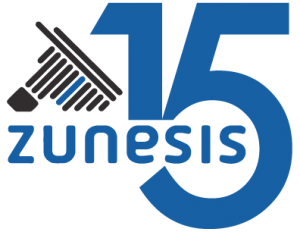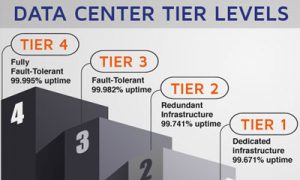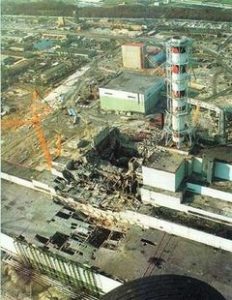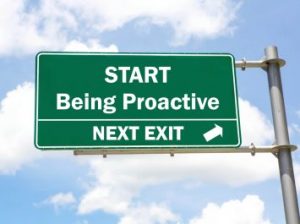Who’s on First?
Not having a Project Manager as it pertains to IT Services is like watching Laurel and Hardy’s, “Who’s on First routine.”
Examples of this routine can be put into Services terminology:
- When there are three different answers as to when a piece of equipment is going to arrive for installation / implementation.
- And there are three different dates when installation / implementation begins.
- There are four, not three, engineers scheduled to do the work when only one is needed.
- There’s actually six different points of contact at the client’s environment.
- Who’s in charge of this project being completed? The Sales Rep? The Engineer?, The Client? And so on…
- Nobody pays attention and simply shows up at the site in order to correct the environment using a screwdriver when they actually need a jack-hammer.
Simply, complete chaos, and you wonder how we even have stop lights that work, operating systems that actually turn on with no blue screen, etc., etc.
There has to be someone behind the scenes prodding the hamster in the wheel. Reminding the honey bees to pollinate and knowing that someone in wireless networking might not be the best choice to conduct a Nimble Installation. You can’t show up to a football game wearing tennis clothes. Do you see what I am getting at?
Project Management
Project Management, on so many levels, is a necessary evil at times. Without it, work results in rework, deduplication of costs and opportunity cost lost; not to mention credibility.
If your firm doesn’t have someone or a team of Project Managers who’s going to make sure the following occurs once the Purchase Order has arrived; you may want to rewrite your business model:
- Ordering of Equipment
- Identification of appropriate resources
- Availability of appropriate resources
- Scheduling a Kickoff call with internal and external clients.
- Understanding the scope of work and how long implementations take
- Setting expectations with clients
- Clients setting expectations with their vendors
- Identifying a timeline
- Keeping that timeline and continuously updating the client with work-performed summaries on a daily and/or weekly basis.
- Managing the client and not having the client manage the vendor
- Summary of implementation completed and acknowledgement that project is fulfilled.
Or, maybe create an organization chart for projects which clearly identifies the integral participants of the initiative.
These items are very high level with several subsets. Do you think a team with no leader would be able to perform these and exceed client expectations? Do you think a team with many who think they are leaders are able to perform implement and exceed expectations? Not to go political, but I think they call that last analogy, Congress!
Who’s on first; The Project Manager is. What’s on second; the scope of the project. And so on and so on. It’s not brain surgery folks and yet we hear of so many service firms that don’t practice this for the real game.
Guess what, we do and we practice it every day. It’s called continuous improvement…
A Retrospect: 2004 vs 2019
It’s an exciting time to be a part of Zunesis as we near our company’s 15-year anniversary this October!
15 years is an impressive milestone for any business to cross. It’s especially exciting for a technology company, like ourselves, when you stop and think about how much has changed in our industry since 2004. From solutions, vendors, methods, products…even technology itself has changed vastly over the past 15 years.
I feel like 15 years is kind of a unique amount of time in that it simultaneously sounds minimal and massive. 2004 seems like just yesterday, and also a lifetime ago. At least that’s how it feels to me. I graduated high school in 2004 so maybe that has just permanently altered my perception of that year. Either way, here is a look at some other notable things that happened in 2004. You may be surprised that it has already been 15 years since some of these things have occurred (or maybe you thought they happened longer ago? I don’t know). The fact remains that a lot has changed since then. And awaaay we go!
What happened?
(2004)
NASA’s Spirit Rover touches down on the surface of Mars.

Now (2019)
Spirit exceeded all expectations and remained operational until 2009 when it became stuck in soft sand. Contact was lost with the rover in March of 2010, but NASA has launched several other Mars missions since Spirit’s initial touchdown.
What happened?
(2004)
 The Summer Olympic Games are held in Athens Greece. An event most notable by the breakout performance of swimmer Michael Phelps who won six gold medals and two bronze medals, tying the then record for amount of medals won at a single Olympics, while only 19 years old.
The Summer Olympic Games are held in Athens Greece. An event most notable by the breakout performance of swimmer Michael Phelps who won six gold medals and two bronze medals, tying the then record for amount of medals won at a single Olympics, while only 19 years old.
Now (2019)
Well let’s just say Mr. Phelps has been busy! Since the summer games of 2004, he has won 20 additional medals for a total of 28 (including 23 gold medals) making him the most decorated Olympian in history and, arguably, the greatest swimmer of all time. Atta boy!
What happened?
(2004)
 The NBC television sitcom, Friends, airs its final episode on May 6th, 2004. An event watched by 52.5 million viewers.
The NBC television sitcom, Friends, airs its final episode on May 6th, 2004. An event watched by 52.5 million viewers.
Now (2019)
Friends has had a lasting impact on pop culture and the “buddy-sitcom” format, with droves of loyal fans. Today you can almost always find reruns on TBS as well as the entire series available to stream on Netflix (thanks in part to a massive outcry by fans when rumors spread that the show may be removed from the platform). To this day, the Friends finale stands as the most watched episode of any television series throughout the 2000’s and the fifth most watched television finale in U.S. History.
What happened?
(2004)
 Mark Zuckerberg and his college roommates launch “Facebook”, a social networking site only available to students of Harvard University.
Mark Zuckerberg and his college roommates launch “Facebook”, a social networking site only available to students of Harvard University.
Now (2019)
Oh man. Talk about change! Facebook is now one of the most valuable companies on the planet with over 2 billion users and the distinction of being included in the “Big Four” technology companies along with Google, Amazon, and Apple. The site has had a significant impact on society, communication and culture. Jesse Eisenberg even starred in an Academy Award nominated film about the birth of the site. Who would’ve ever expected THAT back in 2004?
What happened?
(2004)

Caleb Clark crowned 2004 Limon High School Senior Prom King
Now (2019)
Fun Fact: I’m still Prom King to this day
What happened?
(2004)

The Boston Red Sox win their first world Series since 1918, ending an 86-year championship drought.
Now (2019)
The Red Sox have won three additional championships since 2004 (including one in 2007 against our own Colorado Rockies ☹ *sniffle*). This made them the first team to win four World Series trophies in the 21st century. I guess 2004 was the kick in the pants that they needed!
What happened?
(2004)

Ken Jennings goes on massive 74-game winning streak on the TV gameshow Jeopardy!, winning over 2.5 million dollars in the process.
Now (2019)
The unprecedented nature of Jennings’ winning streak breathed new life into both the gameshow’s ratings and popularity, becoming TV’s highest-rated syndicated program during Jennings’ run. He remains the record holder for longest winning streak in the show’s history and is often asked back to compete in special tournaments.
What happened?
(2004, [saved the best for last!])

Zunesis is founded as an IT solutions provider.
Now (2019)
Zunesis was started primarily as a hardware reseller and professional services provider. While that portion of our culture remains unchanged, the technologies we work with and the ways we deliver some of those services changes constantly to keep pace with the ever-evolving world of IT! We now have cloud offerings for both products and services, security platforms, data center advisory services, hybrid IT solutions and a myriad of others.
Change is not only inevitable, it is often necessary in our fast-paced world. Here’s to another 15 years from the folks at Zunesis! Cheers!
Data Center Tiers
Data Center tiers are an efficient way to describe the infrastructure components being utilized at a business’s data center. Although a Tier 4 data center is more complex than a Tier 1 data center, this does not necessarily mean it is best-suited for an organization’s needs. While investing in Tier 1 infrastructure might leave a business open to risk, Tier 4 infrastructure might be an over-investment.
Tier 4 Data Center: A Tier 4 data center is built to be completely fault tolerant and has redundancy for every component. It has an expected uptime of 99.995% (26.3 minutes of downtime annually).
Tier 3 Data Center: A Tier 3 data center has multiple paths for power and cooling and systems in place to update and maintain it without taking it offline. It has an expected uptime of 99.982% (1.6 hours of downtime annually).
Tier 2 Data Center: A Tier 2 data center has a single path for power and cooling and some redundant and backup components. It has an expected uptime of 99.741% (22 hours of downtime annually).
Tier 1 Data Center: A Tier 1 data center has a single path for power and cooling and few, if any, redundant and backup components. It has an expected uptime of 99.671% (28.8 hours of downtime annually).

Tier 4 Data Center Requirements
- Zero single points of failure – Redundancies for every process and data protection stream. No single outage or error can shut down the system.
- 995 % uptime per annum
- 2N+1 infrastructure (two times the amount required for operation plus a backup) – Fully redundant
- No more than 26.3 minutes of downtime per annum – Some downtime is allowed for optimized mechanical operations; however, this annual downtime does not affect user operations.
- 96-hour independent power outage protection – This power must not be connected to any outside source and is entirely proprietary. Some centers may have more.
Tier 4 is considered an enterprise-level service. Tier 4 has approximately twice the site infrastructure of a Tier 3 location.
If you need to host mission-critical servers, this is the level to use. Tier 4 data centers ensure the safety of your business regardless of any mechanical failures. You will have backup systems for cooling, power, data storage, and network links. Data Center Security is compartmentalized with biometric access controls. Full fault tolerance keeps any problems from ever slowing down your business. This is true even if you host less critical servers in other tier levels.
This tier also ensures optimized efficiency. Your servers are housed in the most physically advantageous locations. This drastically extends the life of your hardware. If the temperature and humidity are kept consistent, you gain a great deal of efficiency. Even the backups and dual power sources are treated like primaries.
.
Tier 3 Data Center Requirements
- 982 % uptime per annum
- N+1 fault tolerance (two times the amount required for operation plus a backup) – Ability to undergo routine maintenance without a hiccup in operations. Unplanned maintenance and emergencies may cause problems that affect the system. Problems may potentially affect user-facing operations
- No more than 1.6 Hours of downtime per annum – Downtime is allowed for maintenance and overwhelming emergency issues.
- 72 hours independent power outage protection – at least three days of exclusive power. This power cannot connect to any outside source.
Tier 3 provides most of the features of a Tier 4 infrastructure without some of the elite protections. For instance, the data center has the advantage of dual power sources and redundant cooling and the network streams are fully backed up. Guaranteed uptime is slightly less than Tier 4, and the system is not entirely fault-tolerant.
Tier 2 Data Center Requirements
- 741 % uptime per annum
- No more than 22 Hours of downtime per annum – There is a considerable jump between levels 2 and 3 regarding downtime. Redundancy is one of the primary reasons for this.
- Partial cooling and multiple power redundancies – A Tier 2 Data center will not have redundancy in all areas of operation. The most critical aspects of its mechanical structure receive priority. These two aspects are power and cooling distribution. Redundancy in these areas is only partial. No part of the system is fault tolerant.
The utility of a Tier 2 Data center is fundamentally different. If your business prioritizes redundant capacity components, then you may want to look at this level of infrastructure.
Tier 1 Data Center Requirements
- 671 % uptime per annum
- No more than 28.8 Hours of downtime per annum – There is a considerable jump between levels 2 and 3 regarding downtime. Redundancy is one of the primary reasons for this.
- Zero redundancies – A Tier 1 Data center will not have redundancy in any part of its operations. Facilities do not have any redundancy guarantees within its power and cooling certification process.
The use of the Tier I infrastructure designed for companies with a need for a colocation data center. This is the most budget conscious option for a business. The infrastructure consists of a single uplink, a single path for power, and non-redundant servers.
The tier classification system is another way of assessing redundancy and uptime reliability as you determine your organizations’ data center needs. Contact Zunesis to talk about your data center needs.
A Moment in History: Environmental Disaster
 On April 26, 1986, there was a large and highly destructive steam explosion in the number 4 Nuclear Reactor of the Chernobyl Nuclear Power Plant. This steam explosion ruptured the reactor core and caused an open air reactor core fire. This open air reactor fire went on for 9 days and spread a considerable amount of radioactive contamination over parts of the former USSR and Europe.
On April 26, 1986, there was a large and highly destructive steam explosion in the number 4 Nuclear Reactor of the Chernobyl Nuclear Power Plant. This steam explosion ruptured the reactor core and caused an open air reactor core fire. This open air reactor fire went on for 9 days and spread a considerable amount of radioactive contamination over parts of the former USSR and Europe.
The loss of life is and was undetermined, because of the both the secrecy of the USSR during this time and the lack of a distinct way for the medical professionals of Europe to pinpoint how many people developed cancer from this specific event. However, we do know that 2 deaths happened in the initial explosion. Twenty-eight more died in the days and weeks afterward due to acute radiation syndrome. It is considered the worst nuclear disaster in history.
Data Breach Disaster
In March and April 2019, a massive data breach occurred with Capital One. Thousands of users personal information, social security numbers, and bank account numbers were stolen. This breach was not discovered by Capital One until July 17, 2019, when the individual who stole the information tipped off Capital One that it happened.
According to statements by Capital One, “the individual responsible was able to take advantage of a configuration vulnerability to steal sensitive records stored with Amazon Web Services”. The configuration vulnerability was a misconfigured firewall that the hacker obtained access to. 30 GB of Capital One’s sensitive information was downloaded.
What makes this situation stickier, if not terrifying, is the hacker was an employee of Amazon Web Services from 2015 through 2016. It has been theorized that the hacker had some inside knowledge of how best to gain this access. According to multiple reports, this kind of breach is not uncommon with companies using a web base cloud storage option. Companies are not changing their security procedures to match with the rapid change in the usage of the cloud.
The Connection
At this point you might ask, in what way are these two events similar or linked? The answer is not much. At least on the surface. For me personally, I just happened to watch a Chernobyl documentary on the same day I read of this data breach. It got my mind turning, as I researched and looked at both events.
They were both disasters, but on totally different scales. One was a major environmental and human disaster, while the other will only affect people monetarily. However, if you dig deeper you can see one major theme with both events. There was a human element of mistakes due to not following proper procedures (and in some respects sheer arrogance). In both cases, awareness, understanding, and fixing the issues took way too long. This caused further damage to the millions that were affected.
Disaster Awareness
Seeing these similarities in such starkly different circumstances was eye opening for me. It caused me to do an introspective look at my personal and professional life.
It got me asking, am I assuming too much?
If I know the procedures to avert issues and disasters, does everyone around me know?
Am I prepared to believe the impossible is possible, and change my way of thinking to ensure an issue does not grow into a larger disaster?
How will I react when something does happen, will I panic or will I have a practiced triage process that I can move right into?
How will this affect my family, my friends, my co-workers, and my work in general?
You get the point. A wholesale look from top to bottom. Not surprisingly, I did find things that I can change/improve. New ways where I could be more open. I discovered several things that I did not think about before. In the end, it was refreshing and helped alleviate stress built up that I did not even know I had.
Proactive Action
 I have promised myself that this is something I will do on a regular basis going forward. At this point in my long running internal dialog, I came to the realization that this is how customers must feel when a particularly well executed assessment is done. Or when their projects for a new backup/DR site come online. Or maybe when they change their entire IT outlook to safer, modern, and proactive technologies.
I have promised myself that this is something I will do on a regular basis going forward. At this point in my long running internal dialog, I came to the realization that this is how customers must feel when a particularly well executed assessment is done. Or when their projects for a new backup/DR site come online. Or maybe when they change their entire IT outlook to safer, modern, and proactive technologies.
Our customers, instead of waiting around for something to happen, are proactively changing the landscape to avert disasters. We as a solution provider are not changing the world, or averting disasters for millions, or developing plans for when accidents/disasters strike. It is actually our customers who are.
For me, that is a really powerful thought. How wonderful is it to think that we can be there, side by side, as they work to ensure data breaches are not happening. Or how Zunesis can bring up a new video surveillance system that will ensure better security for our customers and their customers? The answer to these questions is not just wonderful, it is humbling.




